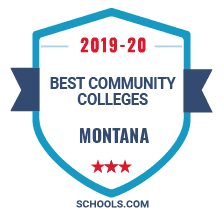CTE in Montana
Over the last several years, career technical education (CTE) has been enjoying a renaissance all across the country. CTE programs in Montana are designed to increase higher education achievement by providing access to practical and technical skills alongside traditional classroom-based instruction.
Statistics collected by Advance CTE, a national nonprofit agency that works to enhance student success through career and technical education, show that CTE initiatives in Montana are achieving their goal. The graduation rate for high school students who concentrate their study on CTE subjects is 98 percent, and roughly nine out of ten CTE graduates go on to find jobs, join the military or enroll in higher education and advanced training programs within six months of leaving high school.
Here's a short list of available resources at the state level to help prospective students learn more about the CTE landscape in Montana:
- The training and education page maintained by the Montana Department of Labor and Industry can help you find locations for CTE opportunities in Montana and give you insight into some state initiatives.
- Visit the trades and technical portion of the online site for Montana Technical University to get an idea of the types of college-level CTE programs available in Montana.
Remember to check with advisors at the school you plan to attend to find out which programs might be available to you.
Transferring Credits in Montana
If you're looking to transfer into a bachelor's degree program after finishing your first few semesters in community college, make sure to check the transfer agreements offered by your destination school. Here are a few of the public and private universities in Montana that may have subject-specific transfer agreements with your community college:
- Montana State University-Billings
- Montana State University-Northern
- Montana Tech of the University of Montana
- Highlands College of Montana Tech
- University of Providence
Some of our best Montana community colleges also have transfer agreements with out-of-state schools. Institutions in Missouri, Idaho and the Canadian province of Alberta all have agreements with select two-year schools in Montana.
What's more, several of the community colleges in the Montana University System provide a simple and affordable transfer method for its students who have earned at least 12 college credits. By filling out a document known as the Transmittal Form, you can authorize your community college to send all records, including your official transcripts, to a destination school within the system.
You can also explore the top universities in Montana for more insight into higher education in the Treasure State, and get some general guidance about the transfer process and how to make it work for you in our college transfer guide.
Resources for Community College Students in Montana
- All two-year schools in Montana are part of the Montana University System, which provides institutional information and a searchable inventory of degree programs.
- MontanaWorks, an initiative of the Montana Department of Labor and Industry, allows students and graduates to search its expansive job board or learn about professional licensing in the state.
- Learn about college scholarships in Montana and other important financial aid information at the scholarships and financial aid page of the Montana Office of Public Instruction.
Methodology
Using the National Center for Education Statistics' Integrated Postsecondary Education Data System (IPEDS), we generated a list of colleges and universities that met the following criteria:
- Level of institution is either "At least 2 but less than 4 years" or "Less than 2 years (below associate)"
- Data is reported for all 14 ranking variables listed in the Methodology section
We ranked the resulting community colleges member schools on multiple factors related to educational opportunity, student performance and student services. Each school was scored on a 10-point scale, using the following data points:
- The published in-district tuition and fees, National Center for Education Statistics, 2018
- The published in-state tuition and fees, National Center for Education Statistics, 2018
- The in-district per credit hour charge for part-time undergraduates, National Center for Education Statistics, 2018
- The in-state per credit hour charge for part-time undergraduates, National Center for Education Statistics, 2018
- Percentage of students receiving financial aid, National Center for Education Statistics, 2016
- Percent of students that transferred to a 4-year institution and completed within 8 years, College Scorecard, 2017
- The graduation rate in 150% time, National Center for Education Statistics, 2017
- Full-time student retention rate, National Center for Education Statistics, Fall 2017
- Student-to-faculty ratio, National Center for Education Statistics, Fall 2017
- Percentage of students enrolled in distance education, National Center for Education Statistics, 2017
- Flexibility, based on the following data points from the National Center for Education Statistics, 2018
- Whether the school offers credit for life experiences
- Whether the school offers programs of study that can be completed entirely in the evenings and on weekends
- Whether the school offers on-campus day care for students' children
- Whether the school offers any kind of alternative tuition plan. These may include, but aren't limited to, payment plans or guaranteed rates.
